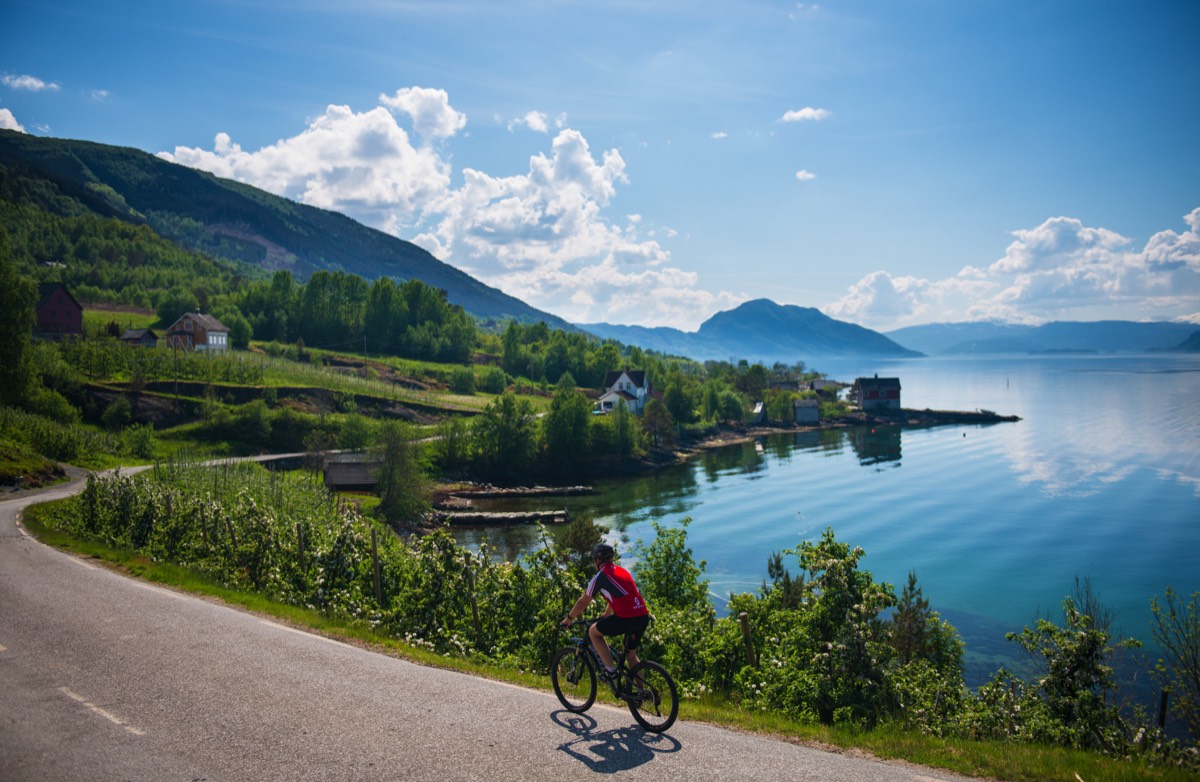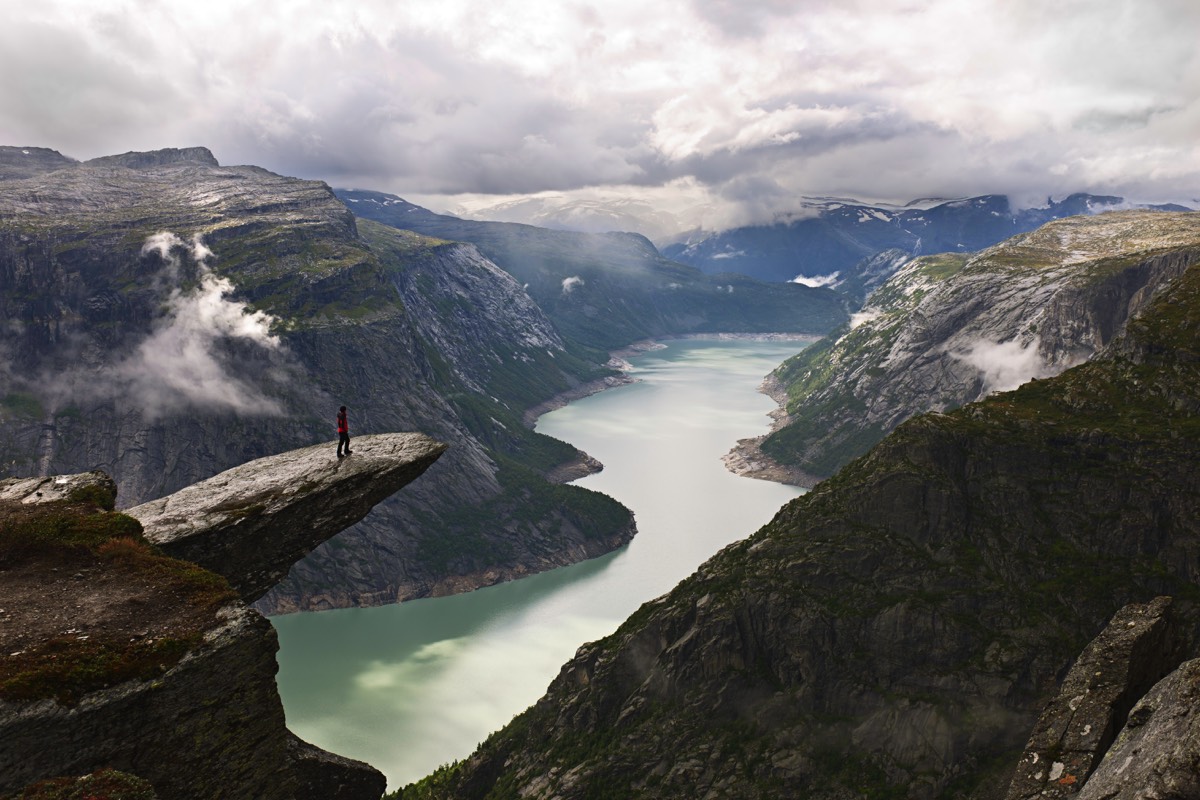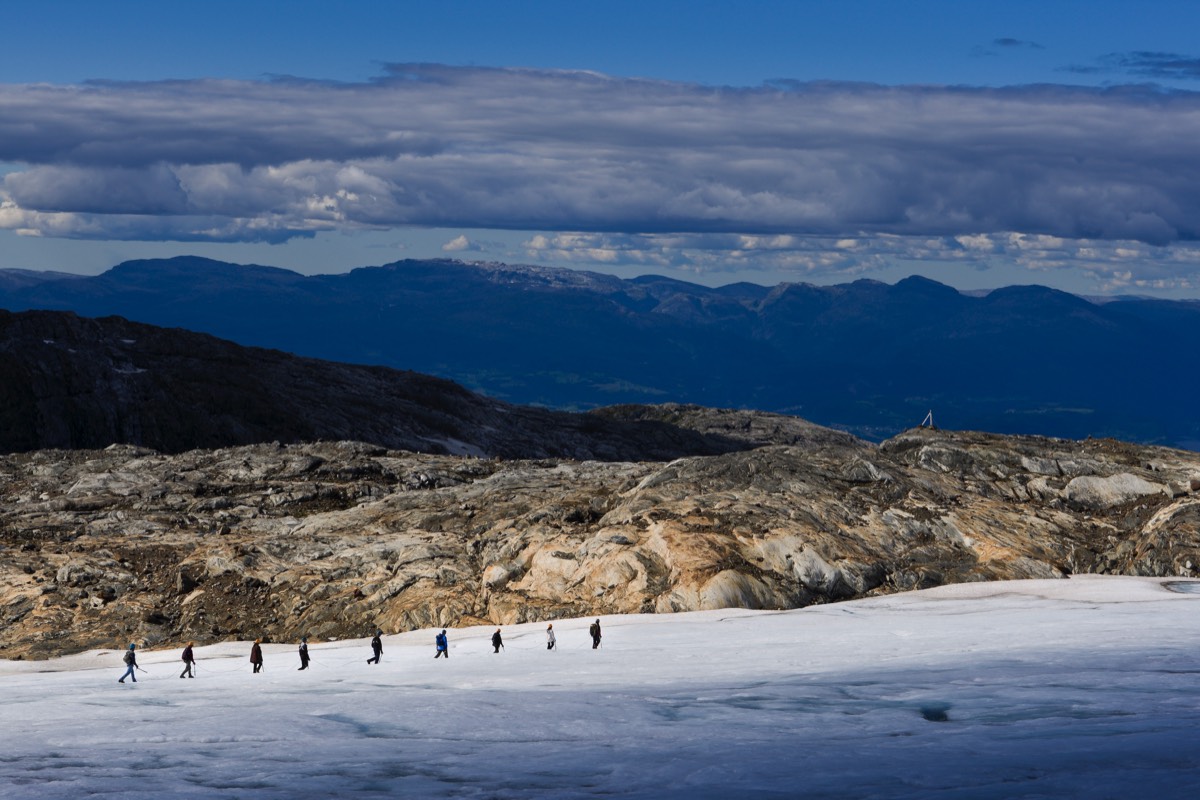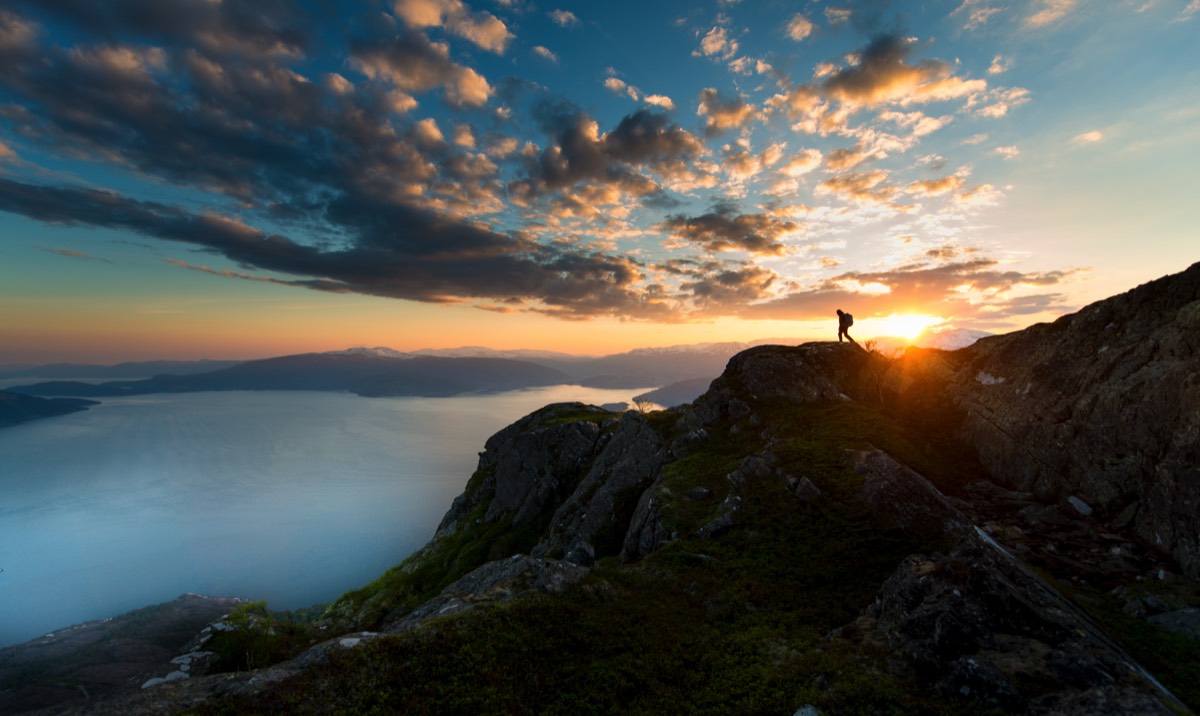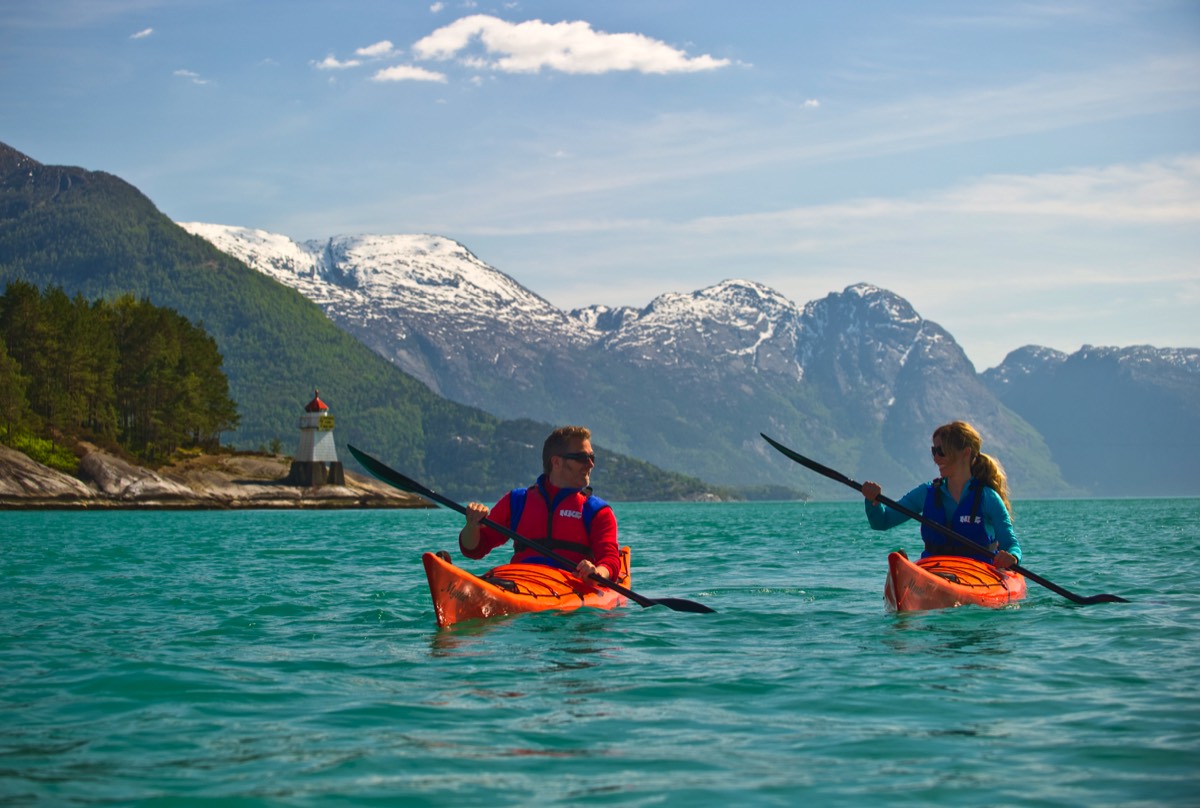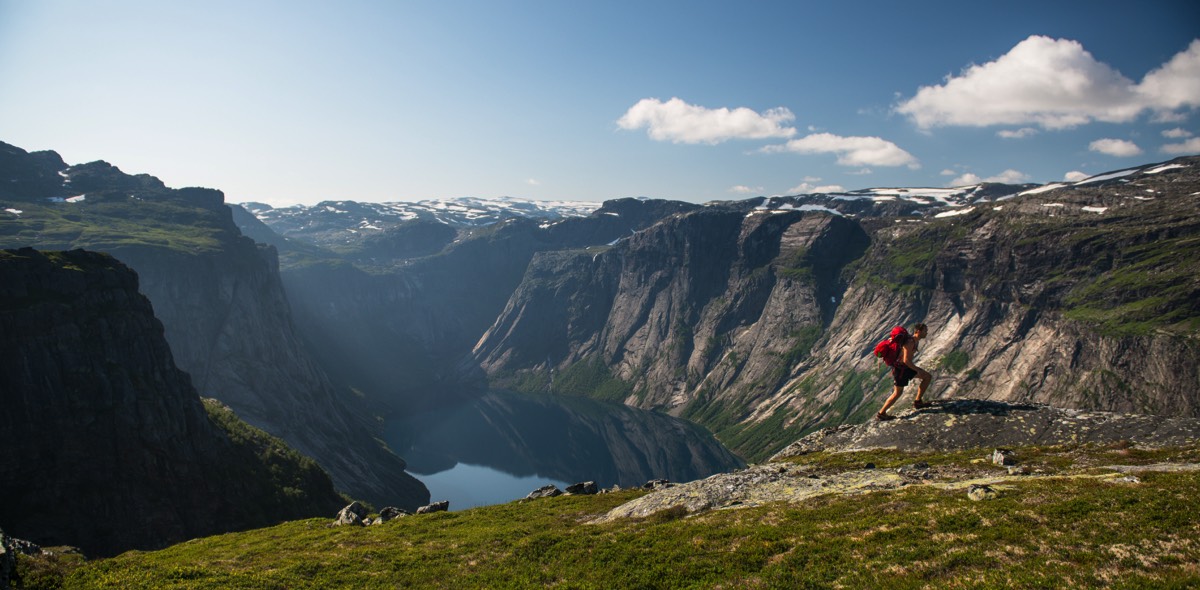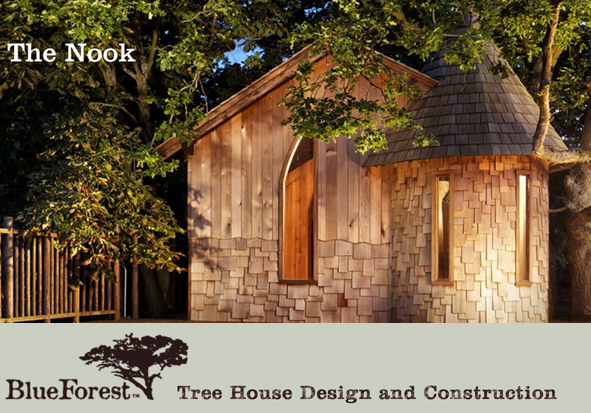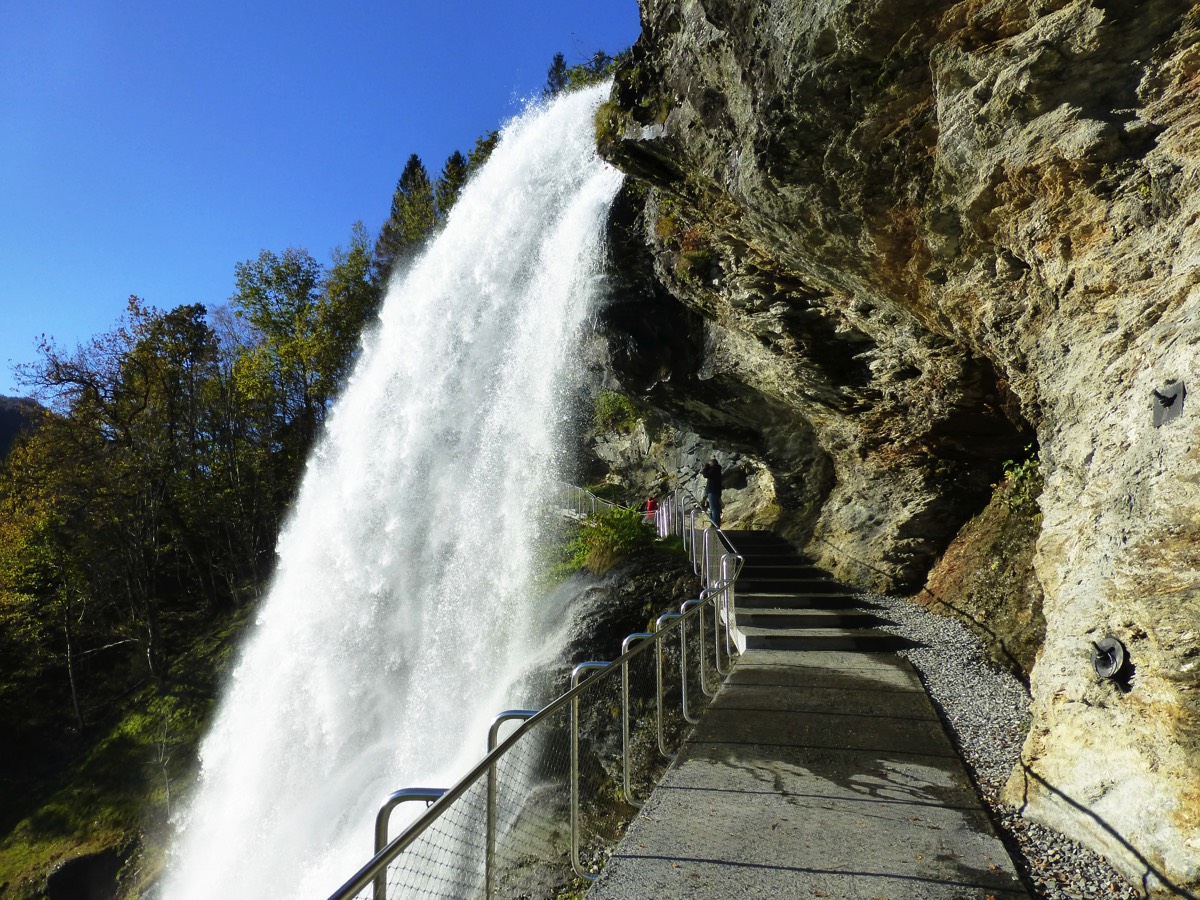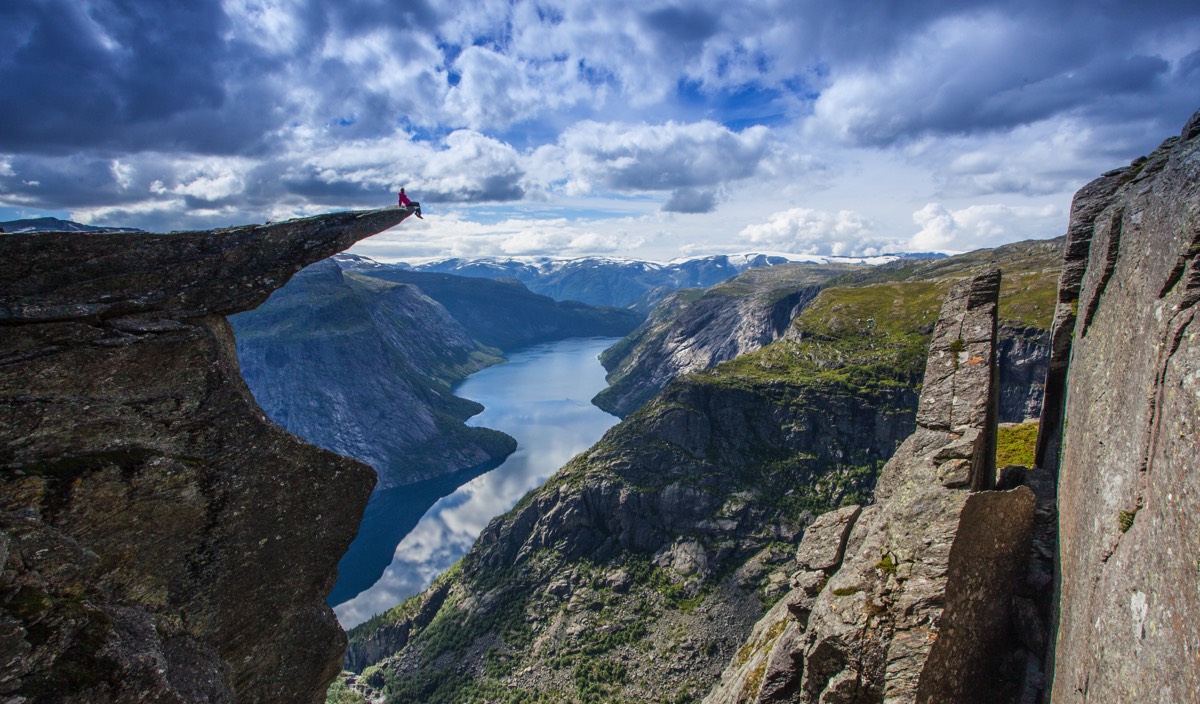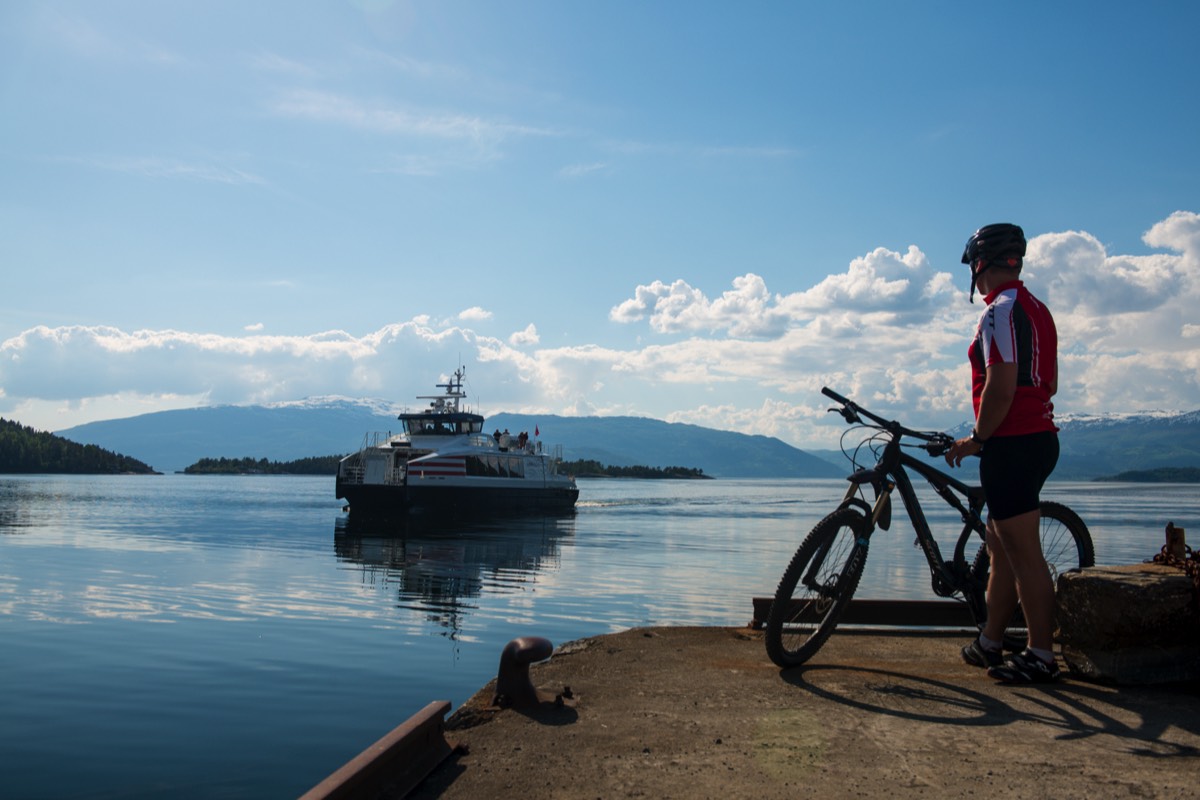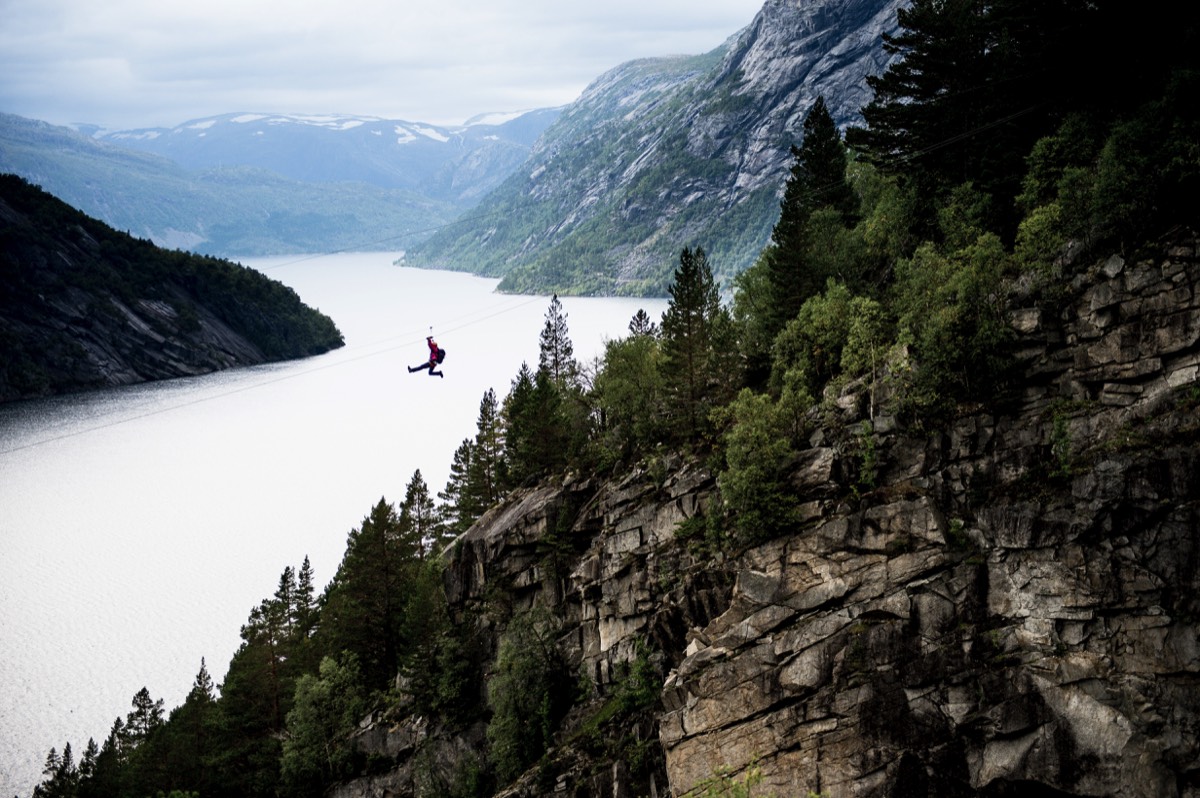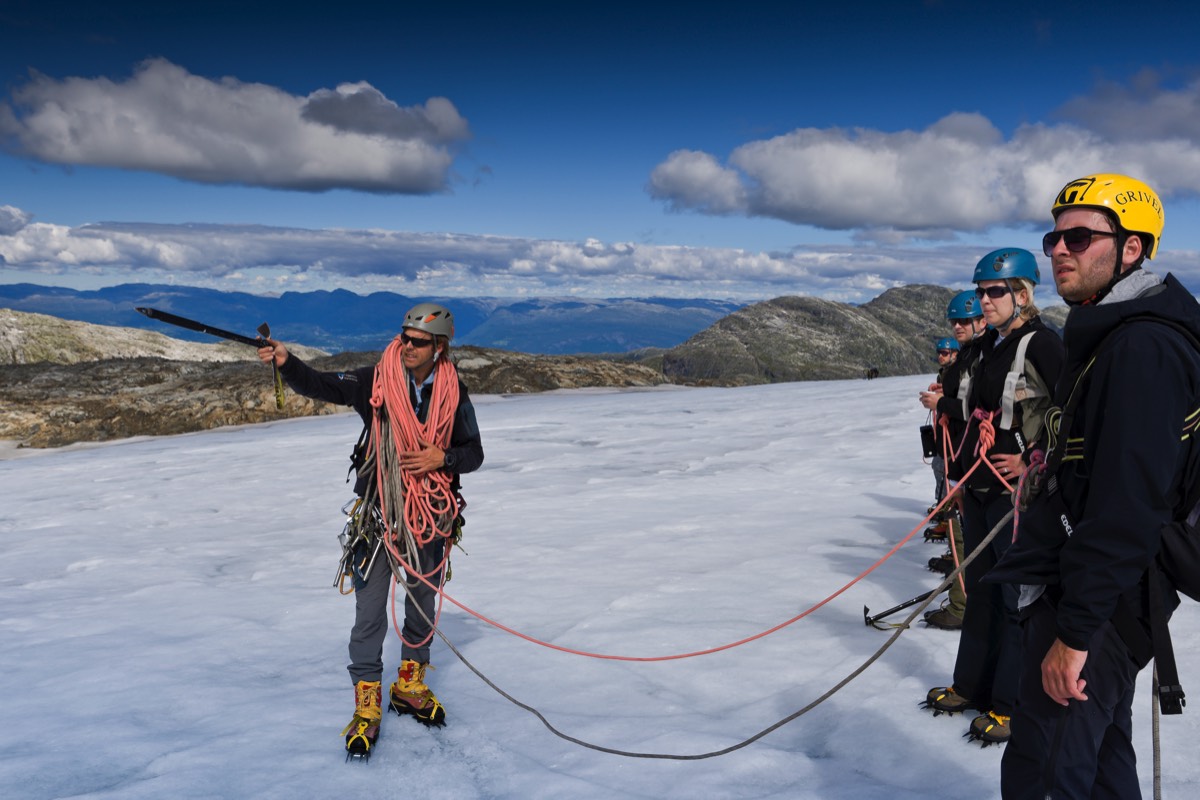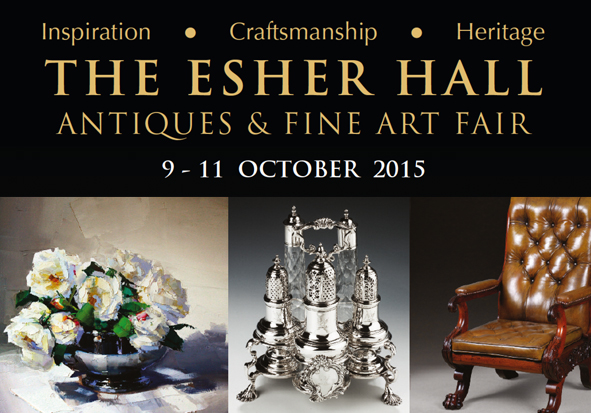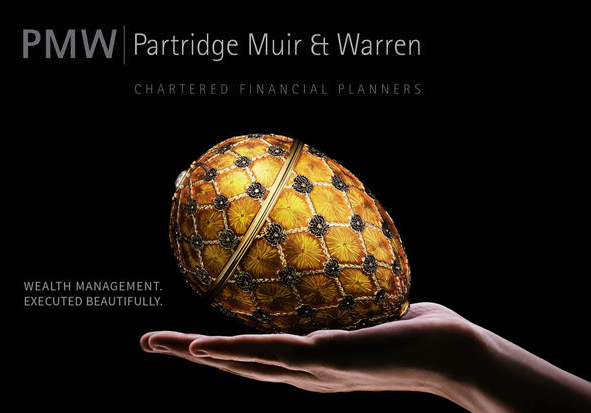TRAVEL
Surrey’s Premier Lifestyle Magazine
Fantasy fjords
From summer skiing to kayaking, the Norwegian fjords are one of Europe’s great outdoor adventure destinations. And don’t worry – you’ll have a chance to pack in plenty of culture and a spot of luxury too, says Hanna Lindon.
Our boat cruised silently through Hardangerfjord, leaving an arrowhead of rolling waves in its wake. Steep-sided mountains rose to either side of us with mist broiling around their lower slopes and their summits still capped by snow.
Every now and then, the evergreens growing thickly around the shoreline would give way to a hamlet of cheerful, clapboarded houses – some surrounded by vines and meadow clearings, others peeping shyly out of the forest. It felt wild, isolated and downright magical.
The long blue ribbon of Hardangerfjord is just a couple of hours’ drive from the city of Bergen – itself a short British Airways’ flight away from Heathrow – but this mist-wreathed fantasy land is almost as pristine as it was in the days when the Vikings launched their longships from the fjord’s wooded shores. Life here in winter is harsh, dark and lonely; but in summer Hardangerfjord transforms into an outdoor enthusiast’s ultimate paradise. Kayakers, swimmers, sailors and fishermen take to the waters, while the waterfall-streaked mountains draw climbers and walkers from all over Norway.
Strangely, though, even with all the publicity the fjords get in the UK, it’s rare to hear a British accent. Almost all the tourists here are local. But that’s okay – because the Norwegians are almost more fluent in English than we are, and their friendliness is legendary.
Even the staff at the Bergen Airport car hire desk radiated hospitable helpfulness. “You want to change the driver’s name on the booking?” one of them beamed, as my husband Guy and I stumbled over, groggy from an early morning flight, and started making demands. “No problem at all! You’re looking for an outdoor store? Of course, there’s one just round the corner, please take my map.”
We stopped off in the largest and shiniest outdoor emporium I’ve ever seen to pick up some new walking trainers before hopping back in the car and making for our accommodation in Herand, on the opposite shore of the fjord. Not long into the hauntingly beautifully drive, we’d decided that Norway was at once one of the most scenically exotic places we’d ever been and also strangely familiar. It wasn’t just the fact that everybody you meet, from store clerks to petrol station employees, are hugely welcoming and happy to chat away in English. It was also the weather.
Every now and then, the evergreens growing thickly around the shoreline would give way to a hamlet of cheerful, clapboarded houses – some surrounded by vines and meadow clearings, others peeping shyly out of the forest. It felt wild, isolated and downright magical.
The long blue ribbon of Hardangerfjord is just a couple of hours’ drive from the city of Bergen – itself a short British Airways’ flight away from Heathrow – but this mist-wreathed fantasy land is almost as pristine as it was in the days when the Vikings launched their longships from the fjord’s wooded shores. Life here in winter is harsh, dark and lonely; but in summer Hardangerfjord transforms into an outdoor enthusiast’s ultimate paradise. Kayakers, swimmers, sailors and fishermen take to the waters, while the waterfall-streaked mountains draw climbers and walkers from all over Norway.
Strangely, though, even with all the publicity the fjords get in the UK, it’s rare to hear a British accent. Almost all the tourists here are local. But that’s okay – because the Norwegians are almost more fluent in English than we are, and their friendliness is legendary.
Even the staff at the Bergen Airport car hire desk radiated hospitable helpfulness. “You want to change the driver’s name on the booking?” one of them beamed, as my husband Guy and I stumbled over, groggy from an early morning flight, and started making demands. “No problem at all! You’re looking for an outdoor store? Of course, there’s one just round the corner, please take my map.”
We stopped off in the largest and shiniest outdoor emporium I’ve ever seen to pick up some new walking trainers before hopping back in the car and making for our accommodation in Herand, on the opposite shore of the fjord. Not long into the hauntingly beautifully drive, we’d decided that Norway was at once one of the most scenically exotic places we’d ever been and also strangely familiar. It wasn’t just the fact that everybody you meet, from store clerks to petrol station employees, are hugely welcoming and happy to chat away in English. It was also the weather.
LOADING
“Shame about the drizzle,” said Guy, turning the wipers up a notch. “At least it’s warm, though, and we’ve got our waterproofs so it shouldn’t rule out plenty of exploring.”
Somehow, I thought, the rain didn’t detract from the splendour of the scenery. It certainly enhanced the waterfalls, which threaded the mountains on either side of us like silver ribbons. In Steindalsfossen we stopped off to see one of the most impressive falls in the area: 50 metres of thundering white water with a rocky walkway running right underneath it. Then, after a substantial chandelier-lit lunch at the stately Thon Hotel in nearby Norheimsund, we caught the car ferry from Torvikbygd over to Jondal on the other side of the fjord.
Accommodation in Norway is pricey in high season, but we’d managed to find a good value cutesy little weatherboarded cabin perched high above the fjord in a tiny town called Herand. It was part of a small cabin complex presided over by an immensely friendly Norwegian family and their regal St Bernard dog. The position was lofty and the views tremendous, but there were still plenty of creature comforts around – including a famous pizza eatery called Restaurant Meieriet in the village below.
Somehow, I thought, the rain didn’t detract from the splendour of the scenery. It certainly enhanced the waterfalls, which threaded the mountains on either side of us like silver ribbons. In Steindalsfossen we stopped off to see one of the most impressive falls in the area: 50 metres of thundering white water with a rocky walkway running right underneath it. Then, after a substantial chandelier-lit lunch at the stately Thon Hotel in nearby Norheimsund, we caught the car ferry from Torvikbygd over to Jondal on the other side of the fjord.
Accommodation in Norway is pricey in high season, but we’d managed to find a good value cutesy little weatherboarded cabin perched high above the fjord in a tiny town called Herand. It was part of a small cabin complex presided over by an immensely friendly Norwegian family and their regal St Bernard dog. The position was lofty and the views tremendous, but there were still plenty of creature comforts around – including a famous pizza eatery called Restaurant Meieriet in the village below.
The next day, it was time to start the adventure. We wandered down to the quay after breakfast and picked up rental bikes from Kramsjø before hopping on the foot ferry and motoring through the fjord to the village of Utne. A short uphill bike ride from the harbour brought us to Hardanger Folk Museum, a truly fascinating collection of objects that trace the history of Hardangerfjord’s habitation. The signage is mostly in Norwegian, but that doesn’t detract from the charm of ancient fiddles, displays of traditional Hardanger clothing, ethereal folk art and historical photographs. For us, though, the major appeal was the collection of traditional houses, imported in from all over the fjord, that are now displayed in an open air museum close to the main building. Each house has been equipped to represent the era it dates from, ranging from a truly basic hall where the inhabitants slept on hard wooden benches and a central fire released smoke through a hole in the roof to a nineteenth century schoolhouse.
“The rain is clearing up soon,” the kindly desk minder told us as we left. “Perhaps you should try the famous apfelcake at the Utne Hotel before you set off on your bike ride.”
The Utne Hotel turned out to be a charmingly traditional hostelry just a stone’s throw from Utne harbour. A favourite with royal customers, its collection of antique Scandinavian furniture – lovingly added to by each owner since the hotel’s establishment in 1722 – had us writhing with interior design envy. The apfelcake, cider and apple juice, all made from locally sourced fruit, were everything that the lady in the museum had promised. Our stomachs were full and our hearts warmed as we hopped on our bikes and began the 22 kilometre bike ride back to Herand.
With plenty of ups and downs, this isn’t an expedition for the work-shy. If you’re happy on two wheels though, and reasonably fit, it’s an incredible experience. The road winds through woodland, teeters over rocky platforms with far-reaching views of Hardangerfjord and rolls down into idyllic villages surrounded by vines and soft fruit farms. The true highlight, however, is the descent into Herand, where you can freewheel for several kilometres while drinking in the views of waterfalls, wildflower meadows and a stunning secluded lake.
We reached Herand harbour well in time for pizza at 6pm, and within a few hours we were recovered enough to chat excitedly about skiing the next day.
Skiing in midsummer? Yes, you did read that right. High above Hardangerfjord is the Folgefonna glacier, where the permanent ice and snow opens up the opportunity for winter sports even during the summer months.
Driving up to Folgefonna from Jondal is a large part of the fun; our car bounced along a single track road for mile upon mile with the scenery becoming increasingly barer and more moon-like. With no other cars on the road and the access hardly more than a farm track, this was a world away from skiing in the Alps. We were beginning to think that we’d taken a wrong turning when the track suddenly opened up into a car park and we arrived at a tiny ski resort.
“The rain is clearing up soon,” the kindly desk minder told us as we left. “Perhaps you should try the famous apfelcake at the Utne Hotel before you set off on your bike ride.”
The Utne Hotel turned out to be a charmingly traditional hostelry just a stone’s throw from Utne harbour. A favourite with royal customers, its collection of antique Scandinavian furniture – lovingly added to by each owner since the hotel’s establishment in 1722 – had us writhing with interior design envy. The apfelcake, cider and apple juice, all made from locally sourced fruit, were everything that the lady in the museum had promised. Our stomachs were full and our hearts warmed as we hopped on our bikes and began the 22 kilometre bike ride back to Herand.
With plenty of ups and downs, this isn’t an expedition for the work-shy. If you’re happy on two wheels though, and reasonably fit, it’s an incredible experience. The road winds through woodland, teeters over rocky platforms with far-reaching views of Hardangerfjord and rolls down into idyllic villages surrounded by vines and soft fruit farms. The true highlight, however, is the descent into Herand, where you can freewheel for several kilometres while drinking in the views of waterfalls, wildflower meadows and a stunning secluded lake.
We reached Herand harbour well in time for pizza at 6pm, and within a few hours we were recovered enough to chat excitedly about skiing the next day.
Skiing in midsummer? Yes, you did read that right. High above Hardangerfjord is the Folgefonna glacier, where the permanent ice and snow opens up the opportunity for winter sports even during the summer months.
Driving up to Folgefonna from Jondal is a large part of the fun; our car bounced along a single track road for mile upon mile with the scenery becoming increasingly barer and more moon-like. With no other cars on the road and the access hardly more than a farm track, this was a world away from skiing in the Alps. We were beginning to think that we’d taken a wrong turning when the track suddenly opened up into a car park and we arrived at a tiny ski resort.
LOADING
Folgefonna only offers one main run (easily within the abilities of most skiers), but with a huge snow park complete with some of the biggest jumps I’ve ever seen and an atmospheric mountain restaurant, it’s well worth a visit. The views from the top of the button lift are incredible, plus it’s just brilliantly bizarre to be shooting down a snowy slope in the middle of summer.
The best bit, though, is that an hour after you leave the slopes you can be paddling through the calm waters of Hardangerfjord on a kayak. The tourist information centre in Jondal, along with hosting a café packed with homemade offerings, runs kayaking courses and kayak hire. The sun was blazing through the clouds by the time we arrived in the town, and a few minutes later we were drifting serenely through the still water with the spectacular tableau of the fjord laid out ahead of us.
Exploring Hardangerfjord turned out to be exciting, awe-inspiring and quite unlike anything I’ve ever experienced before. If you want to add a touch of magic to your next trip abroad, then this is the place to go.
The best bit, though, is that an hour after you leave the slopes you can be paddling through the calm waters of Hardangerfjord on a kayak. The tourist information centre in Jondal, along with hosting a café packed with homemade offerings, runs kayaking courses and kayak hire. The sun was blazing through the clouds by the time we arrived in the town, and a few minutes later we were drifting serenely through the still water with the spectacular tableau of the fjord laid out ahead of us.
Exploring Hardangerfjord turned out to be exciting, awe-inspiring and quite unlike anything I’ve ever experienced before. If you want to add a touch of magic to your next trip abroad, then this is the place to go.
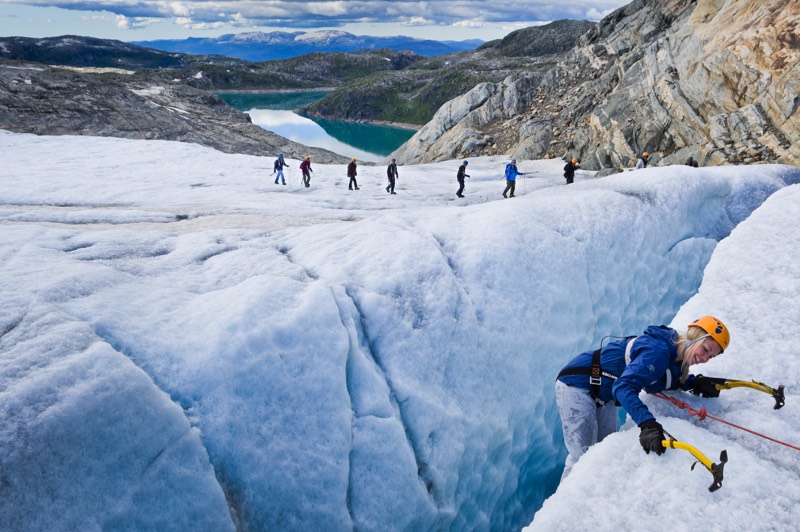
Go explore...
Getting there: We flew with British Airways from Heathrow to Bergen, with the flight taking less than two hours and costing approximately £100 per person.Getting around: Hiring a car at Bergen Airport is the easiest option, although there are buses from Bergen (www.skyss.no). A car ferry connects the two sides of the fjord and some tolls may apply for road usage.
When to go: The weather tends to be best between May and October, while winter can see substantial snowfall and access problems.
Where to stay: We booked a self-catering cabin in Herand with Bakketunet (www.beta.bakketunet.no). Other more luxurious recommendations include the Utne Hotel in Utne (www.utnehotel.no) and the Thon Hotel in Nordheimsund (www.thonhotels.com).
Where to eat: Options are a little limited in rural areas, but Restaurant Meieriet (www.meieriet.no) and the two hotels already mentioned are all good options.
Top attractions: Hiring bikes from Kramsjø (www.sykkelihardanger.no), skiing on the Folgefonna glacier (www.folgefonn.no), kayaking around Jondal (www.visitjondal.no), visiting the Hardanger Folk Museum (www.hardangerogvossmuseum.no).
Find out more: www.hardangerfjord.com
